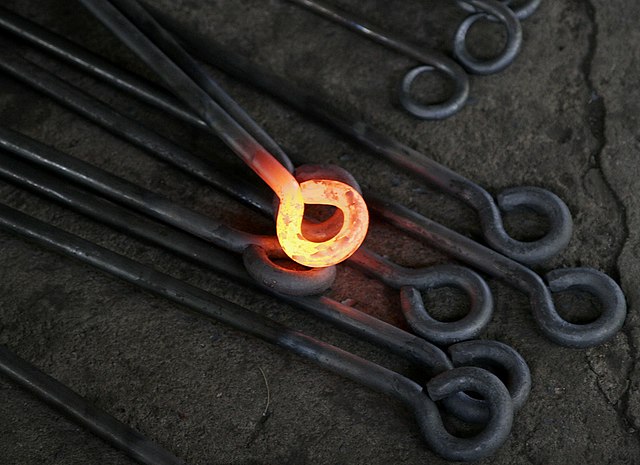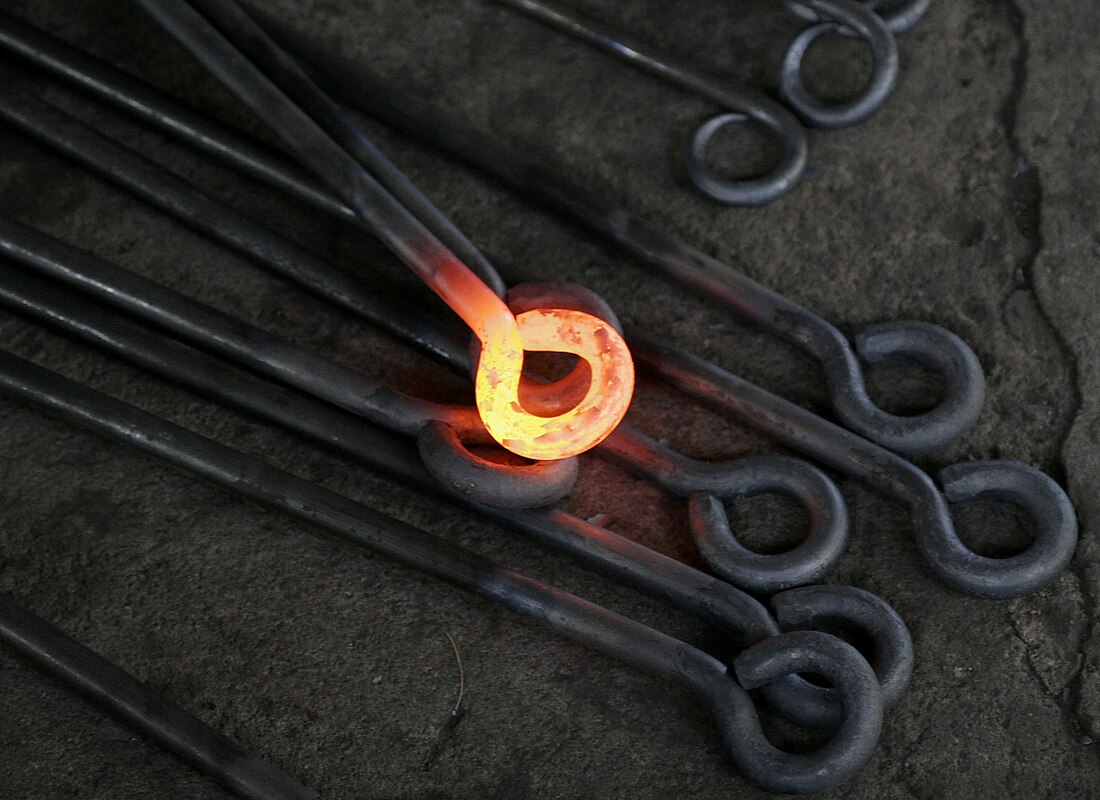Top Qs
Timeline
Chat
Perspective
Red heat
Practice of using colours to determine the temperature of metal From Wikipedia, the free encyclopedia
Remove ads
In blacksmithing, red heat is the practice of using colours to determine the temperature of a piece of metal (usually iron or steel). Long before thermometers were widely available, it was necessary to know what state the metal was in for heat treating it, and the only way to do this was to heat it up to a colour which was known to be best for the work.

This article has multiple issues. Please help improve it or discuss these issues on the talk page. (Learn how and when to remove these messages)
|

Remove ads
Chapman
According to Chapman's Workshop Technology, the colours which can be observed in steel are:[1]
Remove ads
Stirling
In 1905, Stirling Consolidated Boiler Company published a slightly different set of values:[2]
Remove ads
See also
Notes
- When viewed in dull light.
References
Wikiwand - on
Seamless Wikipedia browsing. On steroids.
Remove ads
